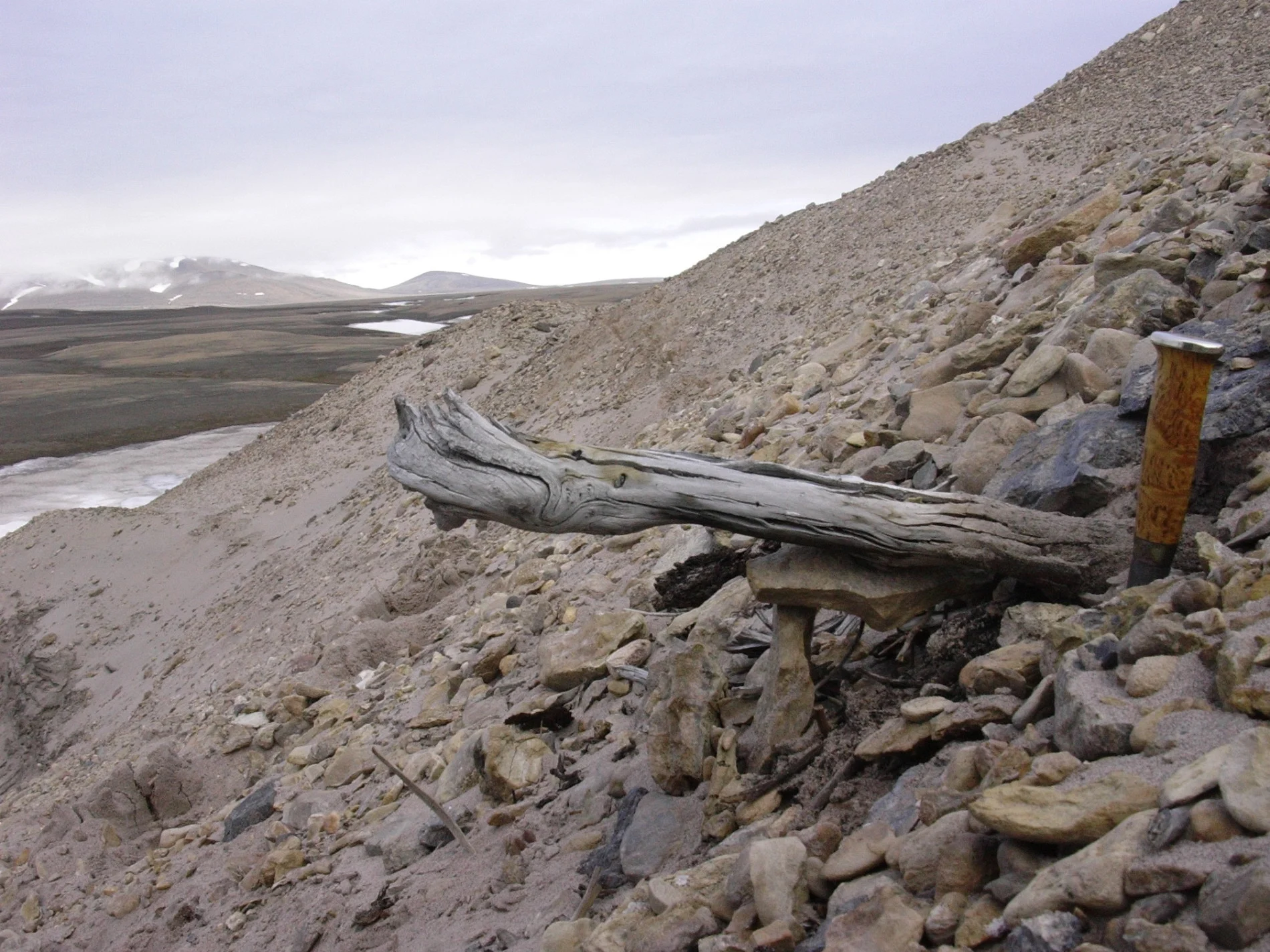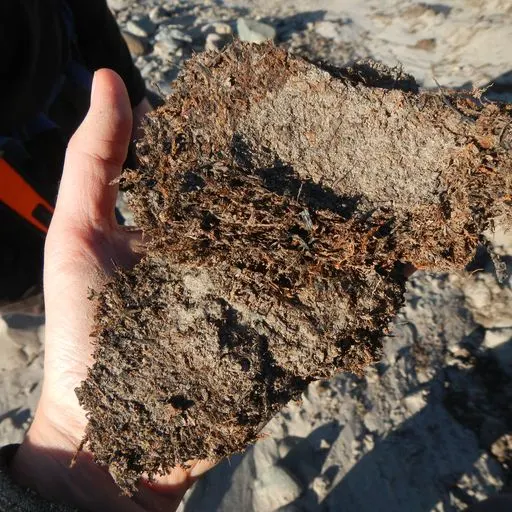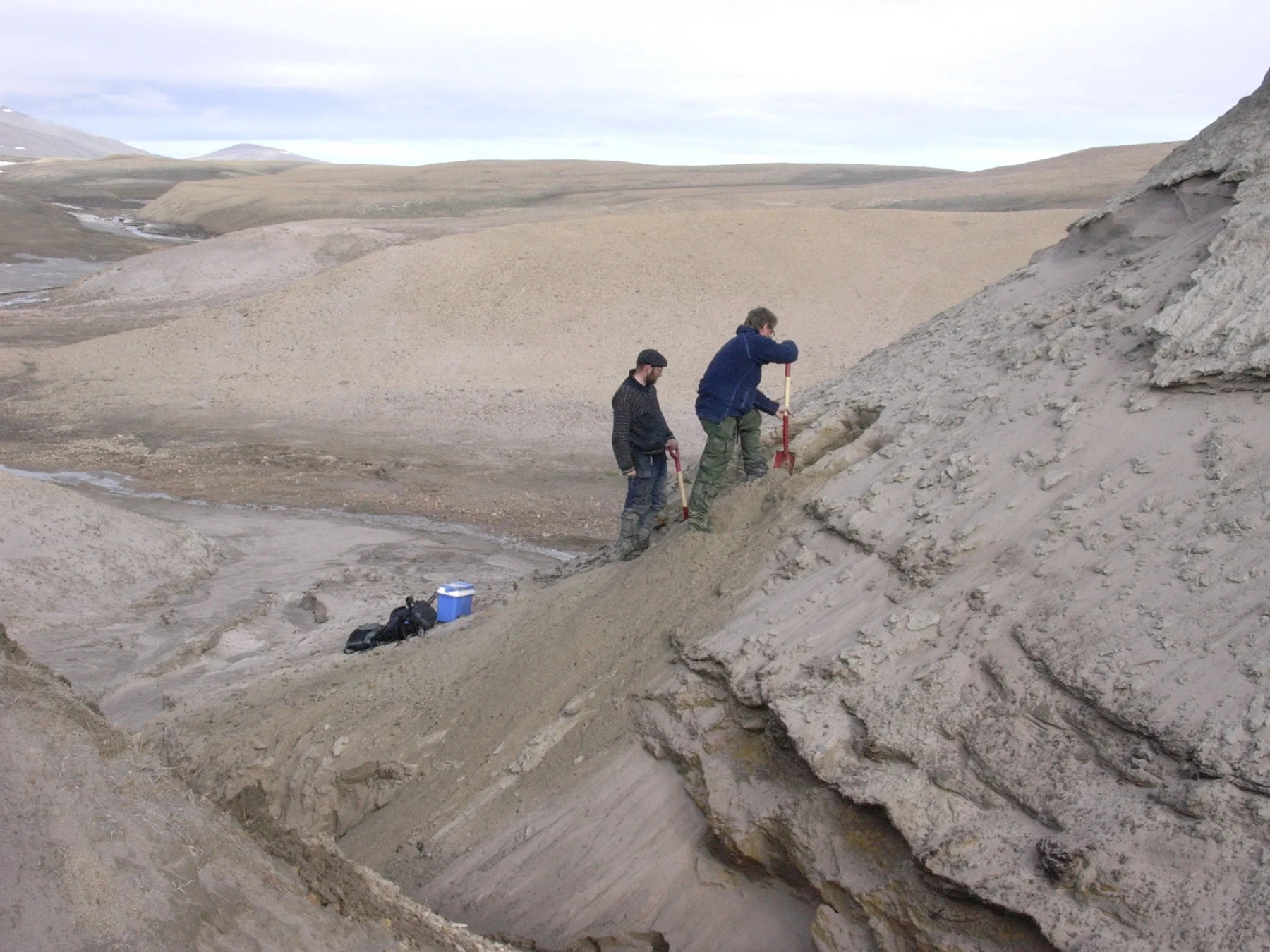
World's oldest DNA found in northern Greenland dates back 2 million years
New knowledge about ancient landscapes help scientists better understand how the current changes in the climate could impact Arctic landscapes.
Researchers made an exciting discovery while analyzing sediment samples from northern Greenland: microscopic fragments of DNA that are now the oldest DNA samples ever discovered.
The environmental DNA samples studied by an international team of 40 scientists were preserved in ice or permafrost and had not been disturbed by humans for two million years.

Newly thawed moss from the permafrost coastal deposits. The moss originates from erosion of the river that cut through the landscape at Kap København some two million years ago. (Nicolaj K. Larsen)
Their findings, published in Nature, state that the samples are only a few millionths of a millimetre long and were found in a 100-metre-thick sediment deposit within a fjord in Greenland’s northernmost point.
The researchers hope that their findings can be used to understand ancient ecosystems and better predict the long-term environmental impacts of modern-day climate change.
Like many Arctic regions, Greenland is rapidly undergoing change as global temperatures soar. A recent study published in Nature reported that warming atmospheric and oceanic temperatures are contributing to the significant melt of Greenland’s glaciers, which is the largest ice mass in the Northern Hemisphere.
See also: Mysterious 'Dark River' may flow for 1,000 km underneath Greenland
John Gosse, a professor at Dalhousie University, determined the age of the sediments through geochronometry, which is the measurement of geological time and can determine the dates of significant events like meteor impacts, eruptions, and earthquakes. These dating methods indicated the samples were about two million years old, which predates the previously oldest DNA sample by one million years.

Professors Eske Willerslev and Kurt H. Kjær exposing fresh layers for sampling of sediments. (Svend Funder)
In a press release, Gosse explained that the dating methods the research team used have revealed new knowledge about the site, specifically that the Greenland Ice Sheet’s position today is similar to how it was two million years ago when Greenland’s climate was between 10° to 17°C warmer.
The study states that Arctic climates 3.6 to 0.8 million years ago resemble those that are forecasted under future global warming scenarios.
Watch below: Go deep inside Greenland's melting ice cap in this new documentary
"A new chapter spanning one million extra years of history has finally been opened and for the first time, we can look directly at the DNA of a past ecosystem that far back in time," Eske Willerslev, one of the lead scientists of the project, said in a press release.
"DNA can degrade quickly, but we've shown that under the right circumstances we can now go back further in time than anyone could have dared imagine."
The DNA samples indicate evidence of animals and plants including reindeer, hares, lemmings, birch, herbs, and poplar trees. Samples also indicated that mastodon, an elephant-like Ice Age animal, existed within Greenland before becoming extinct, which was previously unknown.

An artist’s reconstruction of the landscape surrounding the Kap København formation today. This arctic desert is one of the coldest and driest environments, which is reflected in the low biodiversity and production. (Beth Zaiken)
Thumbnail image: A two million-year-old trunk from a larch tree still stuck in the permafrost within the coastal deposits. The tree was carried to the sea by the rivers that eroded the former forested landscape. (Svend Funder)












